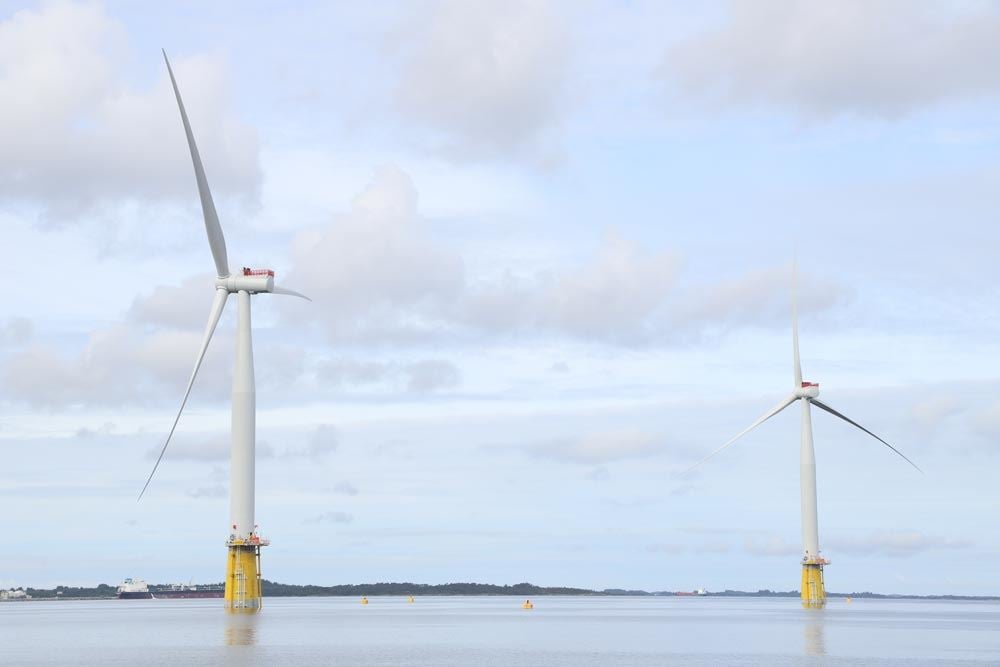With 10 gigawatts of installed offshore wind, the technology can become competitive with other energy sources.
– The first offshore wind farm was built in Denmark in 1996, and since then, interest and development in offshore wind have increased significantly, says Tande. At the beginning of the 2010s, a goal was set to bring the cost of offshore wind down to less than one krone per kilowatt-hour by 2020. This goal was reached by a wide margin, and today bottom-fixed offshore wind farms are being built for as little as NOK 0.5 per kilowatt-hour.
Many experts believe that offshore wind can develop into a larger industry than onshore wind. Floating offshore wind, which is a niche technology, has the potential to cover 12 times the world's electricity demand. For floating offshore wind to be competitive with bottom-fixed wind, supply chains must be developed, and the technology improved.
To cut down costs, floating offshore wind farms must be planned and built in such a way that allows a supply chain to be established, and industry to build factories that produce relevant components on a large scale. This will contribute to industrialisation and increased volume production.
Continuous improvement and innovation in offshore wind technology are also essential to achieving further cost reductions. Research on grid connection and subsea systems is necessary, as well as exploring new solutions for floating wind turbines. At the same time, the industry must balance standardisation and innovation to lower costs and make the technology more accessible.
Planning and predictability
To achieve profitability in large-scale offshore wind development in Norway, it is essential to have a good plan that provides predictability for stakeholders, including a certain number of gigawatts of capacity to be built at specified times. Grid capacity must also be ensured to handle the power generated and have predictable framework conditions.
The offshore wind industry in Norway has great potential for growth. A report from the National Expert Council estimates that by 2030, Norwegian suppliers' export revenues will reach NOK 85 billion. Tande anticipates revenue growing to over NOK 100 billion per year, making the offshore wind industry as large as the supplier industry for oil and gas.
– It is essential to think about Norway's offshore wind resources in the same way as when oil was discovered in the 1970s and to build a sustainable industry, says Tande. He also mentions the various research areas that SINTEF and NorthWind work with, which include environmental design and sustainability, but also areas such as grid connection, system integration, digital solutions, maintenance strategies, marine operations, and substructure technology.
He would like to see even more activity in the deployment and operation of offshore wind in Norway but points out that this largely depends on public spending at the moment. To achieve climate goals, investments in climate technologies must be increased globally, and offshore wind is seen as a crucial energy technology, especially in Europe. The increased demand for renewable energy in the region is expected to continue to grow, and the price of offshore wind will remain competitive due to the high price of electricity and alternative energy costs.
In summary, cost reductions in offshore wind will come with expansion, but require both innovation and standardisation in the industry, as well as public support and predictable framework conditions. Norway has a unique opportunity to take a leading role in the offshore wind industry and thereby contribute to achieving global climate goals while creating a sustainable and profitable industry for the future.
The Ostend Declaration
A sign that large-scale developments are on the way: On Monday, a significant agreement was signed in Belgium between nine European countries, committing themselves to install at least 120 GW of offshore wind capacity by 2030 and at least 300 GW by 2050. The Ostend Declaration is seen as a milestone on the path towards a greener and more energy-independent Europe.
The declaration was signed at the North Sea Summit, which brought together representatives from Belgium, Denmark, France, Germany, Ireland, Luxembourg, the Netherlands, Norway, and the United Kingdom. It builds on the first summit held last year in Esbjerg, Denmark. The historic Esbjerg Declaration laid the groundwork for transforming the North Sea into a green power hub for Europe.
In an open letter published before the summit, the heads of government of the participating countries emphasised the enormous efforts required to achieve their goals, with significant investments needed in both offshore and onshore infrastructure. They also pointed out the need to balance the rapid deployment of offshore wind with the protection of marine ecosystems.
Podcast episode
Listen to John Olav Tande discuss cost reductions in floating offshore wind with Kirsten Å. Øystese on the Energy and Climate podcast (the podcast episode is in Norwegian).

